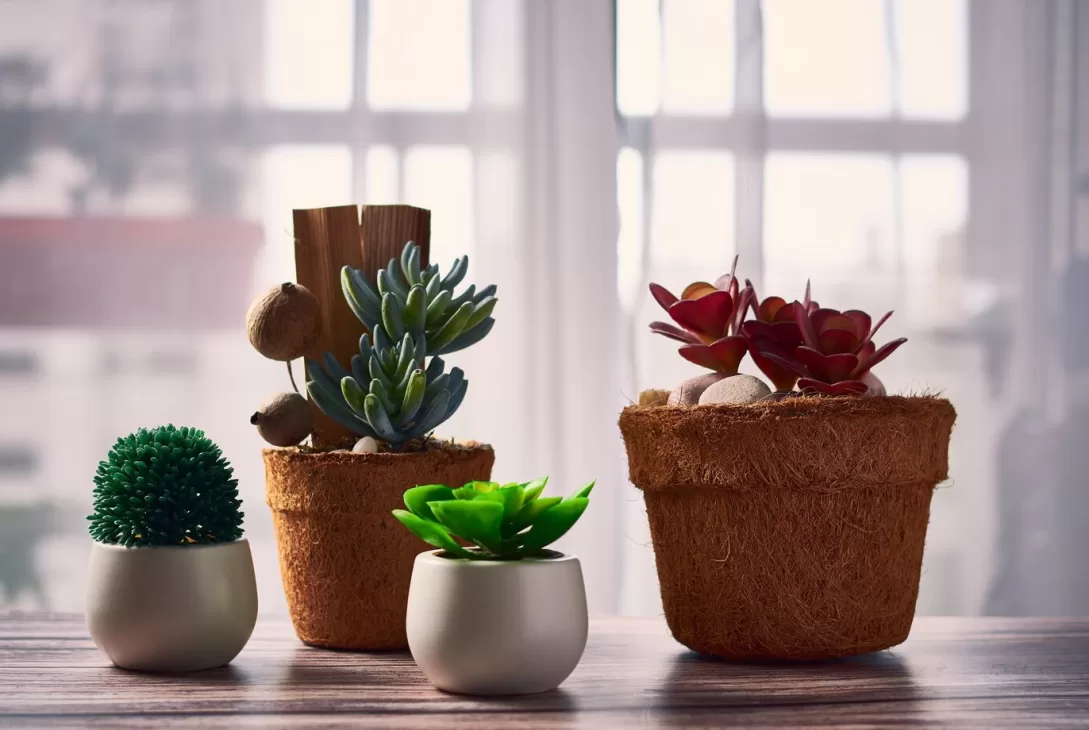We are pretty sure you’ve noticed the change in Malaysia’s weather. Hasn’t it gotten swelteringly hot as of late? Somehow, it kind of feels like we’re stuck in between the borders of the Sahara desert because that’s the only place we can relate to now. It’s dear time we need a break from this heat but we don’t think your little cactus and succulents will agree to this.
Though their origins stem from scorching hot weather, especially from deserts, they have also managed to tame the majority’s opinions of indoor gardening with them. Well, from our side, we can easily see why. Cactus and succulents are charming plants that have skyrocketed in popularity for their low-maintenance nature and their unique appearances (if that’s what you’re into). Some if not all people are drawn to their shapes, colors and the way they can also breathe life into any indoor space just like your regular plants can do.
Differences of Cactus and Succulents
Structure
Cacti have distinct and fleshy stems with areoles. They are small, round, and cushion-like structures where flowers, spines, or new growth emerge. Succulents relate back to a broader category of plants with thick, fleshy, leaves, or stems, but they do not necessarily have distinct areoles that are typically found in cacti.
Spines
A cactus’ whole personality is their spines which are basically just modified leaves. However, these spines tend to serve various functions, such as including protection from predators and reducing water loss. Succulents may or may not have spines, and when present, they are generally softer and less prominent than those of cacti.
Flowers
While both cacti and succulents can produce flowers, cactus flowers are large, showy, and blossom from the areoles, while succulent flowers can vary in size, shape, and color. They may also bloom from the tips of stems or at the base of leaves.
Adaptations of Cactus and Succulents
Water Storage
Both cacti and succulents are pretty similar in characteristics where they have specialized tissues that allow them to store water. It allows them to survive in arid environments where rainfall is limited. Cacti typically store water in their fleshy stems, while succulents store water in their leaves, stems, or roots.
Drought Tolerance
Since these plants are mostly adapted in dry climates, cacti and succulents have developed strategies to cope with drought conditions. For example, they are able to reduce water loss through thick and waxy coatings on their leaves. On top of that, they are also able to open their stomata (pores found on the surface of leaves and stems) at night to minimize water loss through transpiration.
CAM Photosynthesis
CAM stands for Crassulacean Acid Metabolism and many cacti and some succulents utilize this type of photosynthesis. It is a unique adaptation that allows them to take in carbon dioxide at night when temperatures are lower and store it as organic acids. These acids are then broken down during the day to release carbon dioxide for photosynthesis. This adaptation helps them conserve water by minimizing daytime water loss through their open stomata.
Now that you know in general their differences and adaptation techniques to survive in places that are not as favorable to them, you can learn how to care for these living creatures. As low maintenance as they seem to be, they may still need a little attention every now and then so you don’t actually kill them.
Tips on Taking Care of Your Plants
Adequate Lighting
If you’re keeping your cactus and succulents indoors, you’re going to need to find a nice and sunny spot to place them. For instance, a sunny windowsill would be one of the best options. From there, they can soak up plenty of bright, indirect sunlight. Avoid placing them directly in the path of harsh, midday sun, because this may be too intense for them.
Another great tip for you if you do not have a sunny spot indoors, is to keep them under artificial grow lights. Even the affordable ones that do a mid job at mimicking natural sunlight will do. However, do note that you only need to keep the lights on for about 6 to 8 hours.
Watering Guidelines
Though we did mention that cacti and succulents origin from places like the desert, they still need water every now and then. However, it is important that you use well-draining soil when potting these plants because it allows excess water to flow quickly. This prevents soggy roots and potential rot.
Frequency and Amount of Watering
This is the scenario where less is more. These plants are built to withstand drought so obviously they prefer to be watered sparingly. A tip for you is to stick your finger into the soil about an inch deep – if it’s dry to the touch, then it’s time to water. Give them a nice drench until water starts to drain out from the bottom of the pot.
Temperature and Environment
Though cactus and succulents are hardy plants, they are still sensitive to extreme temperatures. The ideal temperature for them to thrive ranges between 15°C to 27°C. This range provides them with the warmth they need to grow and flourish without being too hot or too cold.
Soil Type
To ensure that your cactus and succulents have a healthy root system, you will need to incorporate well-draining soil. Ideally, create a soil mix by combining equal parts of regular potting soil with perlite or coarse sand. This mixture allows proper drainage and prevents water from pooling around the roots. If you’re not up to this task, then you can also purchase pre-made cactus or succulent soil mixes available at our indoor plant nursery in Malaysia.
Is there a specific indoor plant in Malaysia that you’re looking for? Besides cactus and succulents, we have many more indoor plants to offer you. Reach out to us and we’ll provide you with the necessary information and recommendations for your indoor space!







